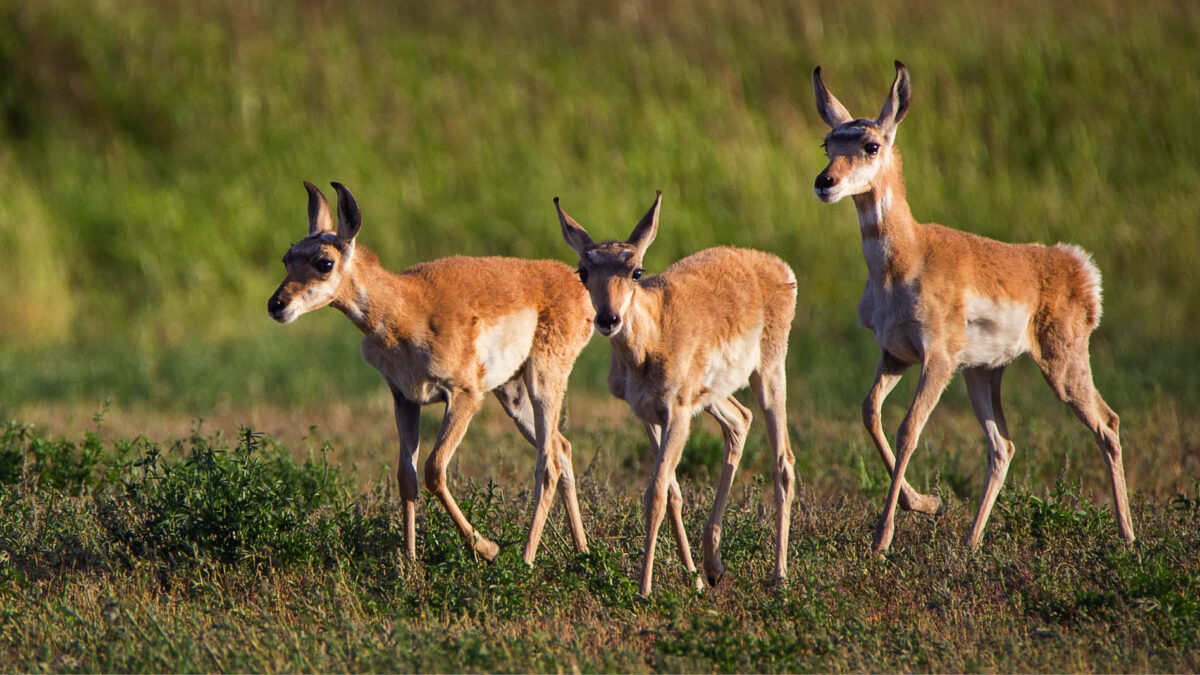
Top of the Chain with Coley Scott, Jr.
March 4, 2022
Customizing A Vinyl Fence
March 7, 2022Pronghorn Corridor Enhancement 2021
by T.J. Schwanky, reprinted with permission from Alberta Fish and Game Association
Pronghorn reach their northern-most distribution in Alberta and are known to conduct annual migrations averaging hundreds of kilometers, often passing through narrow passages en route to key seasonal ranges.
Migratory corridors are critically important to ensuring pronghorn remain at sustainable populations. Several documented accounts describe mass mortalities because of barriers to movement.
Fences in particular are known to create great difficulties for pronghorn as they are unwilling to jump over them. As lower strands are generally 12”-14” above ground, crawling under often results in serious scrapes that can significantly impact the pronghorn’s health as seen in the photograph on the next page. The migration corridor enhancement will remedy this situation by replacing lower barbed wire strands with smooth wire and at the same time raising them to a height easily navigable by the pronghorn.\ The Pronghorn Corridor Enhancement Project, or Antelope Fencing as it’s more commonly known, is in its 13th year, and nearly 600 miles of fence in Southern Alberta have been modified to allow easier passage by antelope and other ungulates. Two projects have already been completed in 2021 and a third is scheduled for September. While COVID-19 was our biggest challenge in 2020, it’s the weather that has provided the greatest challenges in 2021.
The first fencing of the season was near Orion in mid-July. It involved nine miles of fence line in the Sandhills along Pakowki Lake. Access was via quad and side by side only and getting the ten volunteers moved around provided some logistical challenges. The fire hazard was also very high so extra caution was required. While projects typically involve two volunteer days after the site is prepped and the wire is strung out with the help of Alberta Conservation Association staff, this project required volunteers for three days. Temperatures were above 35 degrees every day and the volunteers put in some long hours under very trying conditions. On Saturday, the temperature rose to 37 degrees. It was the hottest day in the history of the project, yet we still managed to get four miles of fencing done. Our volunteers really went above and beyond on this project.
The second fencing of the year was near Writing on Stone Provincial Park and encompassed 8.5 miles of fence line, adjacent to a large ranch we’ve done several projects on previously. It is great to see landowners embracing the project after seeing the success their neighbors have enjoyed. This connectivity of fence lines ensures much easier passage for antelope. Word of mouth has become the best advertising among landowners for the project. This was a project of weather extremes with temperatures hitting 33 degrees on day one and then day two barely made it into the teens, with rain all day. While in the 13-year history of fencing we’ve had to work in a couple small showers, this was the first time we ever had a full day of rain. Despite the tough conditions the volunteers quickly made it through the four miles on the final day. A contingent from FenceFast was on hand to keep our staplers running smoothly and service them for the next event. FenceFast has been a partner in the fencing projects for the past six years and lends us three power staplers and supplies our staples.
Our volunteers are the heart of this project and as this year has demonstrated, no conditions are too tough for them. Funding for this project comes from a grant from the Alberta Conservation Association and from the Minister’s Special License grant program.




